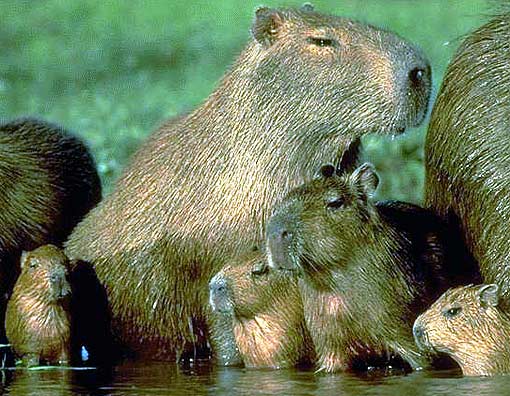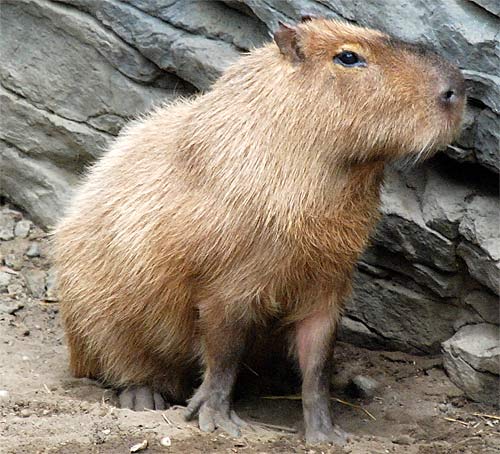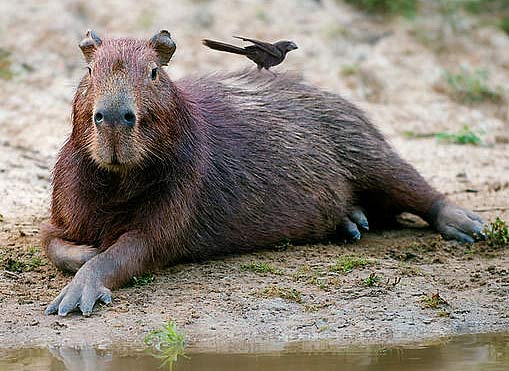Capybara – The World’s Largest Rodent

The capybara, indigenous to much of South America, including Venezuela, Brazil, Colombia, and Peru, has the good fortune of being known as the world’s largest rodent! A close relative to the chinchilla and guinea pig, its name translates in Guarani as “master of the grasses” while its scientific name means “water hog”. They are referred to sometimes as “giant guinea pig” or “giant capybara”. It has a heavy body that is very much barrel-shaped with a short solid head and reddish or golden brown fur. Fully grown they may reach a length of over 4 ft (130 cm) and weigh as much as 140 lbs (65 kg), although the biggest ever-recorded tipped the scales at 232 lbs (105 kg). It has webbed feet and twenty teeth and is tailless with longer legs in the back; females are usually heavier than males.
What Does the World’s Largest Rodent Eat?
Capybaras are herbivores that mainly eat by grazing, much like cattle, on both grasses and aquatic plants, fruits, and the bark of trees. Adults eat up to eight pounds of grass each day. The jaw is not perpendicular, thus they chew their food by grinding back and forth. On a disgusting note, this rodent is coprophagous, which is a long, scientific word that simply means that it eats its own feces – much out of necessity in order to aid in the digestion of cellulose in their grassy diets. They also regurgitate their food in order to masticate the food again. That is more than enough reason it is not an animal you would want to bring home with you, or have lick your hands, that’s for sure. However, it is known as a gentle, friendly animal that is sometimes kept as a pet and has even been used a seeing guide animal for the blind.

Fun Facts about the Capybara
- As many as 100 can be found living in groups at any one time; the group is controlled by a single dominant male. Lucky rodent!
- They communicate through sounds and scents and are very vocal animals that can purr, bark, whistle, squeal and grunt.
- This is one rodent who could make it to the Navy Seals! They can survive beneath the water for as long as five minutes – and uses this ability to escape from predators. They can also sleep underwater by keeping its nose just at the water’s edge. They are great swimmers.
- They sleep very little, often grazing most of the day, taking a quick nap here and there, and then grazing all night.
- Disgustingly enough, they are hunted for their meat in some regions where it is considered to be a delicacy. It can be salted, shredded, made into fancy sausages or eaten with plantains. A big favorite for the Easter celebrations, it apparently tastes a bit like pork and a bit fishy.
- Their thick skin is used to make a good quality leather and such products as belts, wallets, shoes, you name it.

